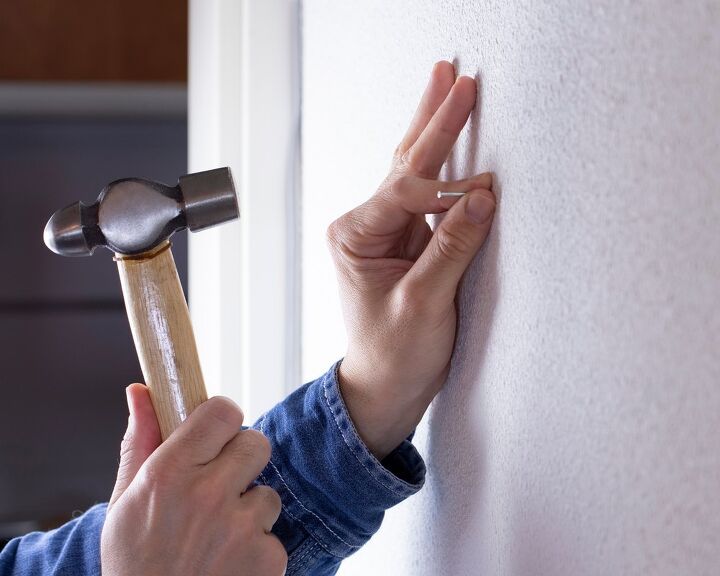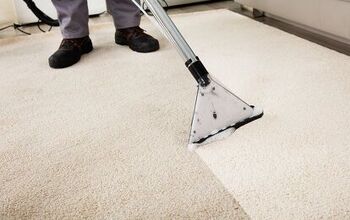How Much Can A Landlord Charge For Nail Holes? (Find Out Now!)

As someone who has over 100 posters in their apartment, I understand the need to nail up a new painting to a wall. However, landlords don’t like seeing their walls look like Swiss cheese. That’s why most landlords have a policy of charging for nail holes or fining tenants for excessive holes. Ever wonder what those fees can be?
How much a landlord can charge for nail holes depends on the number of nail holes they permit. Excessive holes often will result in billing for both spackle and a new coat of paint. It is also reasonable to charge for the specific repairs per hole.
Before you hang up that super cute painting, you need to be aware of what it may cost you in the long run. Our guide will help you plan ahead.
Do You Need Drywall Repair Services?
Get free, zero-commitment quotes from pro contractors near you.

Are Landlords Allowed To Charge For Nail Holes?
Yes, they are allowed to charge for nail holes. However, the charge has to be deemed reasonable by courts. It’s not reasonable to charge $11,000 per hole. It is reasonable, however, to have someone charge for the standard price of repairing the holes.
Are Landlords Allowed To Charge Per Nail Hole?
Landlords will generally make a point of charging per nail hole if you have only a small handful of nail holes on your wall. In many cases, they won’t charge for a small number of holes for pushpins, simply because having a little decor might be “wear and tear” by their definition.
If your landlord has a policy against adding holes to walls of any size in the lease, it’s a different story. You might pay anywhere from $5 to $25 per hole, depending on the repairs each hole needs and if there is a penalty attached to the use of nails. If it’s just a flick of the paintbrush, $1 to $5 might be enough.
Can Landlords Charge For Painting Over Nail Holes?
Let’s say that you are just like me and love having 10, 15, 20 posters on each wall. This is stylish, but if you nail them all up, you might end up getting slapped with a fee for “excessive nail holes.” This is considered to be damage to the apartment rather than wear and tear.
If this is the case, then you may have a single flat fee rather than a fee for each hole. This fee is usually several hundred dollars and is related to the price of repairing/filling the holes as well as painting the wall. It’s not unusual for this to cost between $300 to upwards of $500 for the apartment, if not more.
What Should You Do If You Were Charged (Or May Be Charged) For Nail Holes?
If you were charged for nail holes in your walls, there may not be much you can do. This is a pretty standard charge, especially if you have a bunch of them. Here is what you can do to try to minimize issues:
- Read your rental agreement. If you have a rental agreement that strictly states that you are not allowed to have any type of nail holes, then you might be out of luck. Some agreements actually go so far as to tell you the fine that you might have.
- Talk to your landlord about his stance on nail holes. Ideally, you will do this before you move out to find out what their stance is for the holes. If your landlord charges per hole and you are crafty, you might be able to patch things up for your landlord before you leave. This can save both parties time and sweat.
- If you already were given a charge as part of your move-out, you have the right to ask about the price of repairs. You can also ask if there were penalties that you are being expected to pay. If the penalties were not in the contract, there may be some wiggle room as far as negotiations go.
- Consider hiring a lawyer if you feel you’re being wrongly charged. If you want to argue over repairs, you have the right to do so. You do not have to go it alone! Hiring a lawyer is an option, especially if your landlord was a nightmare to deal with.
Are You Allowed To Patch Your Own Nail Holes?
I’m not a lawyer and every place is going to have different rules. However, the general trend is that there shouldn’t be an issue as long as the patching is done well. A good way to think about it is, “No harm, no foul.” As long as the nail holes don’t actively harm your apartment’s appearance or actually help, you shouldn’t have a problem patching them.
At What Point Do Nail Holes Become Apartment Damage?
This actually can vary greatly depending on the courts as well as your landlord’s definition of excess holes. These signs below suggest that you have crossed the line to damage:
- There are a lot of them. In one article we found, a person had 40 nail holes in their walls. Since this is apparently above the norm, the courts sided with the landlord. This was far more than average, so it became noted as apartment damage.
- The holes that you have are for very large nails. Did you decide that you wanted to hang up a TV on the top of your wall? Maybe it was some equipment for that snazzy home gym set that you had bought. Either way, nails that are unusually large (like over 1/4 inch) may be reason for a charge since they make very large, glaring holes.
- Your holes tore out parts of plaster and paint when you removed the nails. If your nail holes caused noticeable cosmetic damage like wallpaper tears, it’s likely to be a fineable offense.
- There was a clause in your rental agreement stating that you would be fined for this. Some landlords hate (and I mean really HATE!) nail holes. If they declare it to be a major issue or immediately categorize it as damage, you can’t squiggle out of it easily.
Do You Need Drywall Repair Services?
Get free, zero-commitment quotes from pro contractors near you.

Related Questions
How much does a landlord typically charge when they want to deep clean a carpet?
If you moved out and had a serious stain that’s deemed beyond wear and tear, your landlord has the right to charge you for a professional deep cleaning. This typically will rest around $200 per room, though you may have lower charges per room if there is a multi-room stain that needs to be addressed.It’s important to remember that landlords are the ones who are typically required to clean a carpet when a tenant moves out. Deep cleaning would only be chargeable if it deals with oil stains or if there seems to be mold growing on the carpet.
How do I know what my security deposit went to?
If a landlord wants to keep any of your security deposit, then you will need to receive a list of itemized deductions via certified mail. In some cases, it can also include the name of the company and how they came to the deductions. This way, you can actively challenge or address any of the charges that seem to be inaccurate in court.It’s important to ask for proof that the repairs are needed if you want to argue over the security deposit. Something along the lines of a clear photo of the damage makes more sense than most would believe.
Does a landlord have to pay out of pocket to fix repairs caused by the tenant?
It depends, but in most cases, the tenant is liable for any type of repairs that they caused. For example, if a tenant broke a toilet during an argument, the tenant would be the one to foot the bill at the end. The landlord, though, would have to call the repairman to fix said toilet or replace the bowl.

Ossiana Tepfenhart is an expert writer, focusing on interior design and general home tips. Writing is her life, and it's what she does best. Her interests include art and real estate investments.
More by Ossiana Tepfenhart























![10 Most Dangerous Neighborhoods in Baltimore [Updated]](https://cdn-fastly.upgradedhome.com/media/2023/07/31/9075655/10-most-dangerous-neighborhoods-in-baltimore-updated.jpg?size=350x220)



